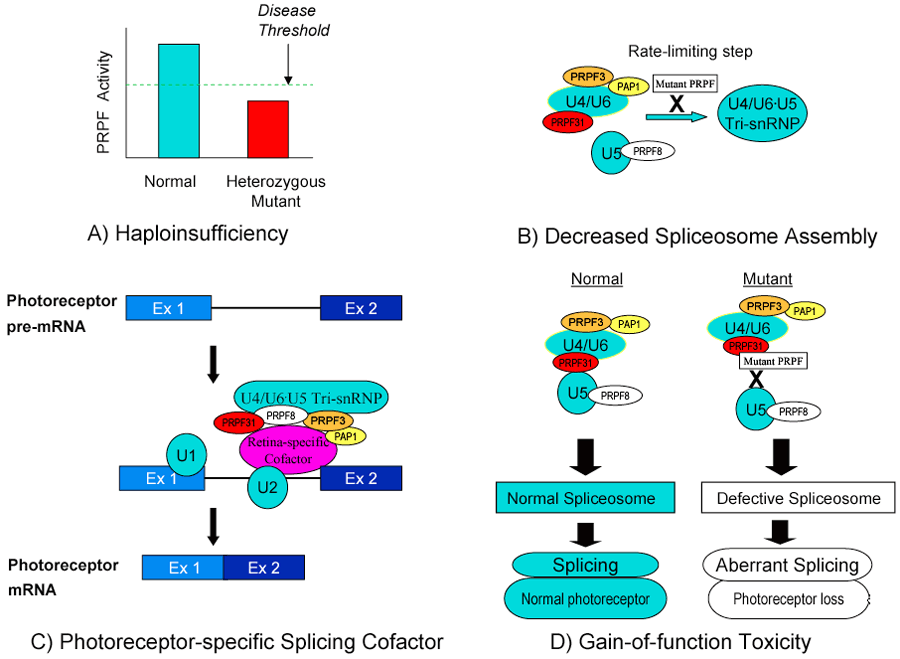![]() Figure 3 of
Mordes, Mol Vis 2006;
12:1259-1271.
Figure 3 of
Mordes, Mol Vis 2006;
12:1259-1271.
Figure 3. Proposed models of the pathogenesis of adRP associated splicing factor mutations
A: A general haploinsufficiency model: a threshold level of splicing factors is essential for normal photoreceptor cell function. A mutant allele for adRP associated splicing factors may result in the expression of a nonfunctional protein. A decrease below the threshold level to support pre-mRNA splicing in photoreceptor cells leads to the development of RP. B: A more specific sub-model of Model A in which tri-snRNP assembly is rate-limiting only in photoreceptor cells. A mutant allele may result in the expression of a functional, but sub-optimal, splicing factor. Because of the extremely high metabolic demands of photoreceptor cells, a slight decrease in splicing efficiency could result in cell death. C: A photoreceptor-specific splicing factor model. The adRP associated splicing factors functionally interact with an unidentified photoreceptor-specific factor essential for pre-mRNA splicing in photoreceptor cells. AdRP mutations may disrupt the interaction with such retina-specific cofactor, resulting in defective splicing of critical photoreceptor genes. D: A gain-of-function toxicity model. AdRP mutant proteins can block the function of wild-type alleles, leading to aberrant pre-mRNA splicing.
